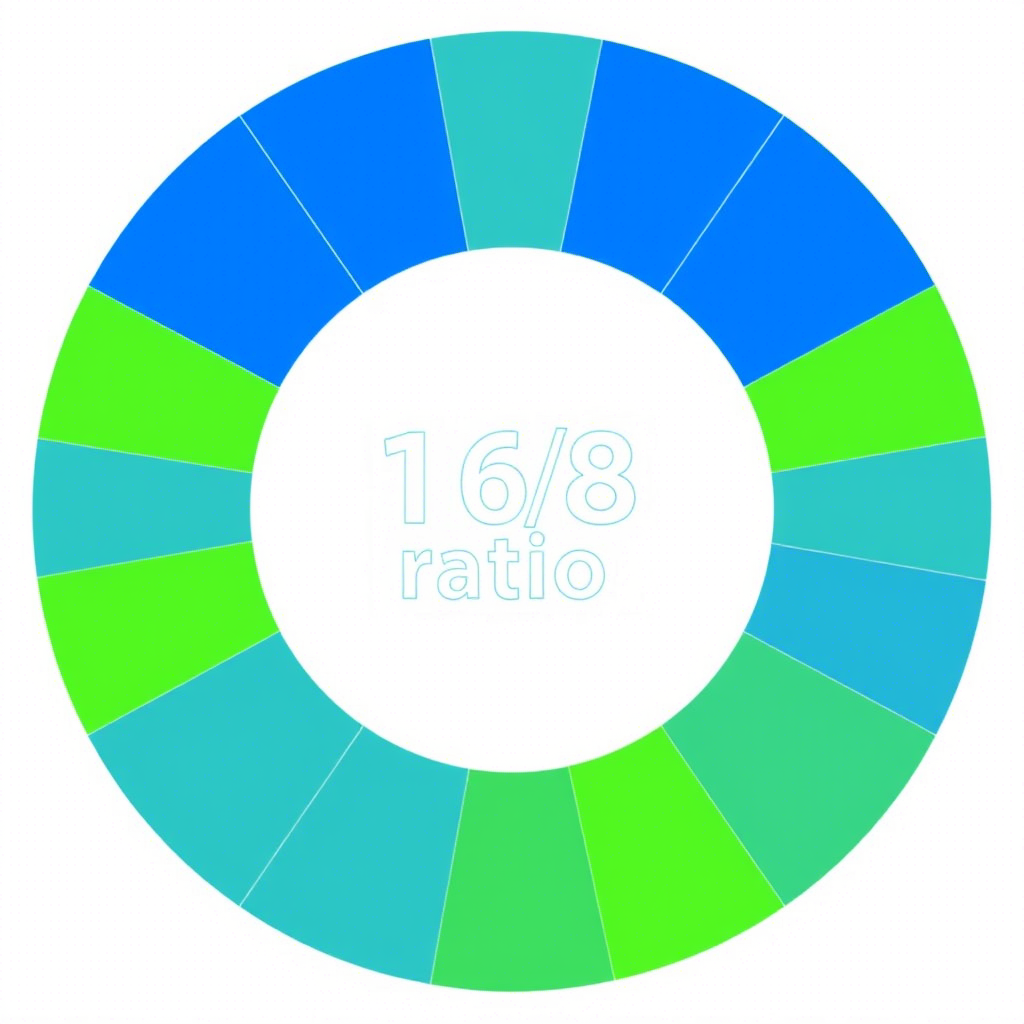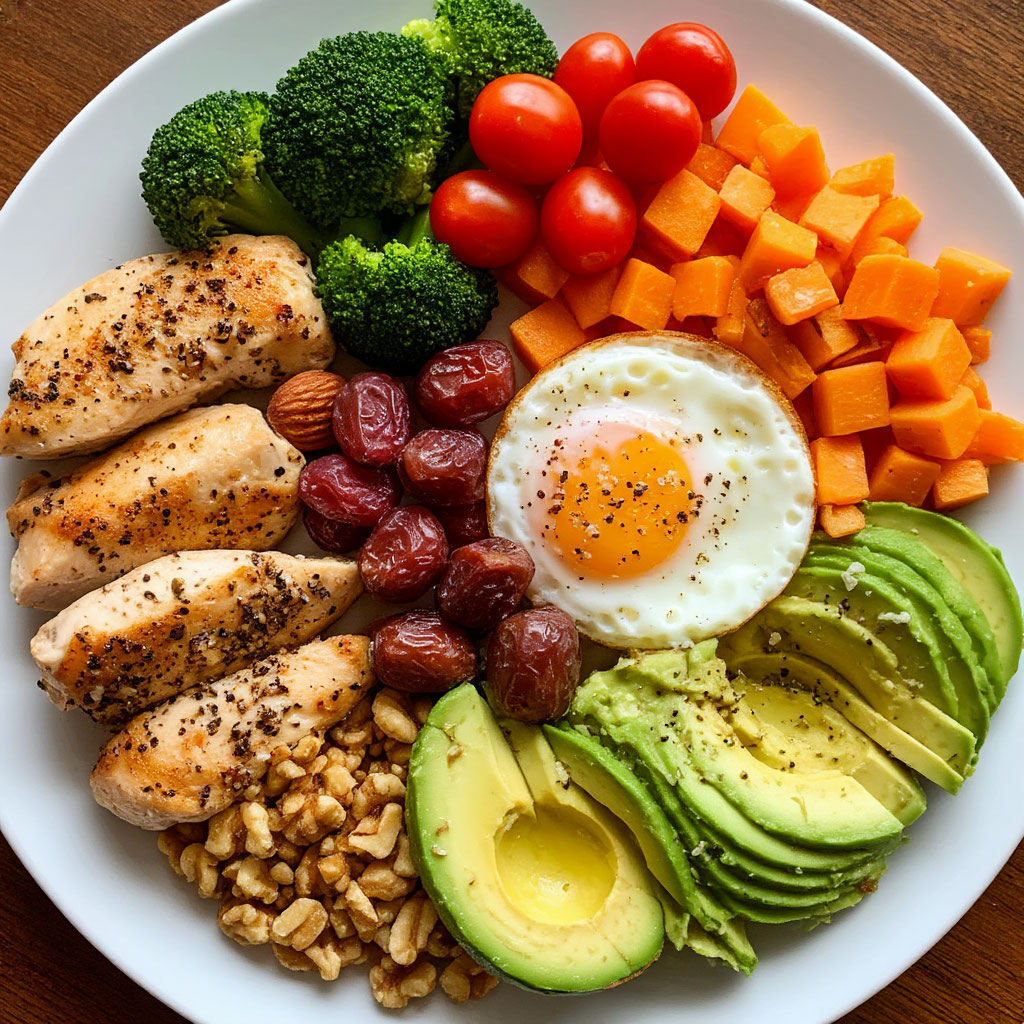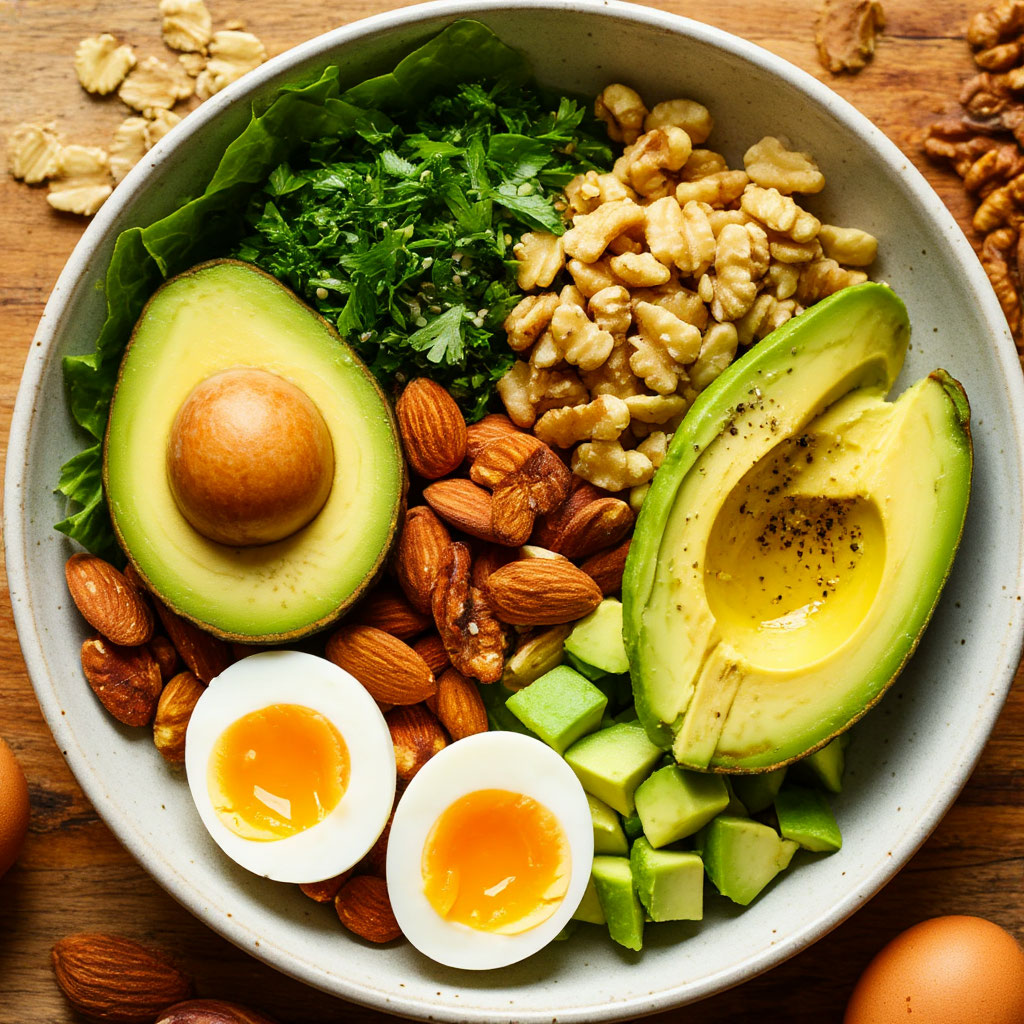
Interval fasting is a popular method of eating based on alternating periods of eating and abstinence from food. Unlike strict diets, it does not ban specific foods, but focuses on the time of their consumption. Schemes 16/8, 5:2 and others allow a flexible approach to the diet, which makes them convenient for many.
Studies show that intermittent fasting can promote weight loss, improve metabolism, and even extend life through autophagy. However, the method has contraindications, and it is not suitable for everyone.
Curious about intermittent (interval) fasting? We made a Beauty Club mini-guide that explains popular schedules, what changes in your body, who should avoid it, and a safe 7-day on-ramp. You’ll find a PDF download at the end of this article to keep for reference.
Principles of interval fasting: how does it work?
Interval fasting is not just a fashion trend, but a well-thought-out diet that has turned the idea of weight loss and health upside down. Unlike grueling diets, there is no need to give up your favorite foods. You just need to observe the periods of eating and abstinence.

Why is this effective?
The main idea of interval fasting is to give the body a break from constantly digesting food. When a person does not eat for 12-16 hours, the level of insulin decreases, triggering the burning of fat reserves. This is a natural process that was used by ancient hunters who were forced to go without food for a long time.
What happens inside the body?
In the first hours without food, the body uses up glucose from the blood. After 8-12 hours, it switches to fat stores — this is how ketosis begins. At the same time, autophagy is activated — the ‘cleaning’ of damaged cells, which slows down aging. That is why the benefits of fasting go far beyond losing weight without dieting.
When is there a schedule?
The most popular diet, 16/8, assumes that a person eats in an 8-hour window, for example, from 12:00 to 20:00, and drinks water, tea, or coffee without sugar for the remaining 16 hours. Such a schedule is easy to integrate into everyday life — many people already skip breakfast. It is important not to compensate for hunger with double portions, otherwise the meaning is lost.

Interval fasting is not a magic pill, but a tool that works only with a conscious approach. If you combine it with moderate activity and a balanced diet, the result will not be long in coming.
Popular interval fasting schemes: How do I choose my own?
Interval fasting is not just a temporary trend, but a science-based approach to nutrition that continues to gain popularity. Unlike strict diets, it doesn’t require counting every calorie or giving up your favorite foods. Instead, the focus is on when to eat the tide, rather than what exactly gets on the plate.

16/8 – the gold standard for beginners
The most popular diet mode, 16/8, has become a real hit among those who want to try interval fasting. Its principle is simple: 16 hours of abstinence from food and an 8-hour window for eating.
Why it works:
- Gives the body enough time to switch to fat burning mode.
- Easily fits into most schedules (for example, from 12: 00 to 20: 00).
- It doesn’t require major changes to your usual diet.
Suitable for anyone:
- those who have never had breakfast in the morning;
- office workers with a clear daily schedule;
- for beginners in the topic of periodic fasting.
5:2-freedom with restrictions
For those who find it difficult to meet the time frame on a daily basis, there is a more flexible scheme. It involves 5 days of regular meals and 2 fasting days with a calorie restriction of 500-600 kcal.
Important nuances:
- Fasting days should not be done in a row.
- It is worth choosing nutritious foods (eggs, fish, vegetables).
- It is important to drink more water on restricted days.

OMAD challenge for advanced users
One Meal a Day — one meal a day is an extreme form of interval fasting, which gives impressive results in weight loss without dieting, but requires serious preparation.
Its peculiarity lies in the fact that the entire daily diet is eaten at one time. This approach requires careful nutrition planning and is not suitable for continuous use.
Lesser-known but effective options
In addition to the basic schemes, there are other approaches:
- 14/10 – a gentle option to start with
- 20/4-enhanced version for fast results
- 36/12-daily fasting once a week
How do I know when there is a shelter?
Choosing the optimal regimen depends on several factors:
- Level of training (beginners should start at 14/10).
- Daily routine (compatible with work and training).
- Individual goals (weight loss, health improvement, or both).

Interval fasting does work, but only with the right approach. The main thing is to find your own rhythm and not turn the process into stress for the body. You should start with the mildest schemes, gradually increasing the duration of hungry windows.
Benefits and risks of interval fasting: what outweighs it?
Interval fasting has long ceased to be just a fashionable hobby – hundreds of studies confirm its effectiveness. But before you switch to a new diet, you should understand what advantages it gives and what difficulties you can face.

Scientifically proven benefits
Those who practice interval fasting note not only weight loss, but also an improvement in overall well-being. One of the key advantages is the activation of the autophagy process, when the body gets rid of damaged cells. This is a kind of ‘cleaning’ at the cellular level, slowing down the aging process.
Studies confirm that a proper 16/8 diet helps normalize blood sugar levels. This is due to increased sensitivity to insulin, which is especially important for people with a predisposition to type 2 diabetes. Periodic abstinence from food has a positive effect on cognitive function and may even reduce the risk of developing neurodegenerative diseases.

Hidden pitfalls
Despite the obvious benefits of fasting, this approach is not suitable for everyone. In the first stages, many people face such unpleasant symptoms as headaches, weakness and irritability. Usually, these symptoms disappear after 2-3 weeks, when the body adapts to the new schedule.
Special care should be taken by those who have problems with eating behavior. Intermittent fasting can trigger bouts of overeating during the permitted hours, which negates all efforts. Do not experiment with such methods for pregnant women and people with chronic diseases without consulting a doctor.

Who does this really work for?
Practice shows that interval fasting is most beneficial for those who combine it with a balanced diet and moderate physical activity. It is important to understand that this is not a magic pill for weight loss without dieting, but a tool that needs to be used correctly.
For those who decide to try, experts recommend starting with the mildest schemes, for example, with a 12-hour break between dinner and breakfast. Gradually increasing the duration of fasting, you can minimize stress for the body and achieve sustainable results.
What you can eat and drink during interval fasting: we reveal the secrets
Intermittent fasting radically changes the approach to nutrition, but it does not turn life into a series of restrictions. You need to clearly understand which products will help achieve results, and which will reduce all efforts to nothing.

Basic principles of nutrition
During the 16/8 meal window, it is important to focus on high-quality, nutrient-dense foods. Protein foods (eggs, fish, meat) help maintain muscle mass, and complex carbohydrates (cereals, vegetables) provide energy for the whole day. Healthy fats from avocados, nuts and vegetable oils support hormonal balance.
Those who practice interval fasting for weight loss without dieting, often make the mistake of starting to eat everything in a row at the allowed hours. This approach not only slows down progress, but can also harm your health. It is much more effective to adhere to the principles of a balanced diet.

What is allowed during the fasting period
Many people are concerned about the question of what can be consumed other than water during abstinence from food. Black coffee and sugar-free tea are not only allowed, but also help to bear hunger more easily. Green tea enhances the benefits of fasting due to its antioxidant properties.
Mineral water without gas, herbal infusions and even bone broth (no more than 50 kcal per serving) help to diversify drinks. Try to avoid anything that might trigger an insulin spike, including artificial sweeteners.
The most common mistakes of beginners
One of the main problems is the wrong time for eating. When deciding when to eat a tide, many people forget to take into account their biorhythms. For example, ‘larks’ may be more comfortable with an early food window, and ‘owls’ – shifted to the second half of the day.
Another common mistake is lack of fluids. Water not only helps to cope with the false feeling of hunger, but also accelerates metabolic processes. The optimal volume is 30-35 ml per 1 kg of weight, distributed evenly throughout the day.

How to make the transition smooth
For those who are just starting to practice interval fasting, nutritionists recommend gradually reducing the food window. For example, first move breakfast an hour later, then another hour until you get a comfortable schedule. This approach minimizes stress for the body and helps to adapt faster.
Keep in mind that the strictest 16/8 diet will not bring results if you eat fast food, sweets and other ’empty’ calories in the food window. The quality of food is just as important as the timing of its intake.
Results and Opinions: The truth about Interval fasting
Interval fasting has gathered a lot of myths and conflicting opinions around it. Some call it a panacea for all diseases, others consider it a dangerous experiment on the body. Where is the truth?

What the scientific research says
Studies confirm the effectiveness of interval fasting for weight loss. People who practice the 16/8 diet lose an average of 3-8% of their body weight in 3-12 months. Such results are achieved only with a comprehensive approach, including monitoring of nutrition and physical activity.
Scientists note other positive effects: reducing the level of’ bad ‘ cholesterol, normalizing blood pressure, improving insulin sensitivity. The benefits of fasting have been confirmed for the prevention of type 2 diabetes and cardiovascular diseases.
Real feedback from practitioners
Those who chose to lose weight without dieting through interval fasting, share mixed impressions. Many people note:
- sustained weight loss without a plateau effect;
- improving digestion and digestive tract function;
- increased energy and concentration;
- the normalization of appetite.
However, about 20% of those who try this technique refuse after a month. The main reasons are difficulties with adaptation, headaches, and the inability to combine with an active training regime.

Opinion of doctors and nutritionists
Medical experts agree that interval fasting can be a useful tool, but not a universal solution. Endocrinologists warn: it is important to correctly determine when there is a eating window – a violation of circadian rhythms can lead to hormonal disruptions.
Nutritionists emphasize that the key is not so much the schedule of food intake, but its quality. Even the strictest 16/8 meal plan does not compensate for regular consumption of fast food and sweets.
Who did it really help?
Analysis of successful cases shows that interval fasting gives people the best results:
- with a sedentary lifestyle;
- violation of carbohydrate metabolism;
- a tendency to overeat in the evening;
- low insulin sensitivity.
For professional athletes and people with an accelerated metabolism, such an eating regimen often turns out to be ineffective or even harmful.

Is it worth trying?
Interval fasting is a working tool, but not a magic pill. Before switching to a new regime, you should consult your doctor, especially if you have chronic diseases. It is important to soberly assess your capabilities and be prepared for the gradual adaptation of the body.
How to adapt to interval fasting without stress
Switching to interval fasting is like learning to ride a bike — it seems impossible at first, but after a couple of weeks you get used to the process. The secret of success lies in proper preparation and gradual entry into a new rhythm of life.

Turn-based strategy for beginners
You should start practicing interval fasting small. For the first week, just have dinner 1-2 hours earlier than usual and breakfast the same amount later. This gentle approach allows the body to adjust smoothly without drastic changes. When this schedule becomes comfortable, you can switch to the classic 16/8 power mode.
It is important to monitor the body’s reactions — a slight feeling of hunger in the morning becomes a good sign, but dizziness or nausea signals the need to adjust the approach. Many people make the mistake of abruptly switching to strict schemes, which often leads to breakdowns and disappointments.

Tricks to fight hunger
The period of adaptation to interval fasting is usually accompanied by an increased appetite in the first days. To deceive the feeling of hunger helps a plentiful drink-a glass of warm water with lemon in the morning creates a feeling of fullness of the stomach. Green tea or black coffee without sugar not only dulls the appetite but also enhances the benefits of fasting due to its tonic properties.
When it becomes difficult to fast, it is worth taking a break for work or a walk. Often the desire for a snack is not caused by a real need for food, but by habit or boredom. The first two weeks are the most important for forming new eating habits.
How to save energy and productivity
Many people fear that switching to interval fasting will affect performance. Practice shows the opposite — after a period of adaptation, most people notice an increase in concentration and clarity of mind in the morning. The reason is a stable blood sugar level, which does not undergo sharp jumps after breakfast.

To maintain energy, it is recommended to include foods rich in healthy fats and proteins in the food window. They provide long-lasting saturation and help avoid energy dips:
- avocado,
- nuts,
- oily fish,
- eggs.
Weight loss without dieting becomes a natural consequence of this approach to nutrition.

When to take a step back
If headaches, weakness, or irritability persist after 3-4 weeks of interval fasting practice, this is a signal to reconsider the approach. Perhaps the schedule is too aggressive, or the body needs more time to adapt. Sometimes it is useful to temporarily reduce the period of abstinence from food for 1-2 hours and gradually return to the desired regime.
Interval fasting is not a competition, but an individual process. Some people feel comfortable starting the day without breakfast, while others find it easier to skip dinner. By experimenting with different options, everyone can find the optimal balance between comfort and efficiency.
Want to try interval fasting safely? This compact guide covers 14:10, 16:8, 5:2, a 7-day start plan, and clear do/don’t rules—plus key safety notes.
Download the PDF: Beauty Club — Interval Fasting Mini-Guide



